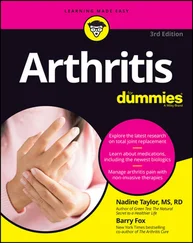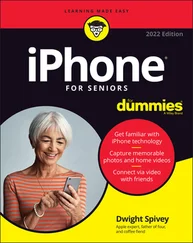1 ...6 7 8 10 11 12 ...17  I don’t recommend using a pintail comb when you first start cutting hair, because the metal tail is quite sharp and could damage an eye or an ear if someone fidgets or turns unexpectedly. I also never recommend using a pin tail comb when sectioning young children’s hair because they’re masters at doing surprise pirouettes, despite never having had a single ballet lesson.
I don’t recommend using a pintail comb when you first start cutting hair, because the metal tail is quite sharp and could damage an eye or an ear if someone fidgets or turns unexpectedly. I also never recommend using a pin tail comb when sectioning young children’s hair because they’re masters at doing surprise pirouettes, despite never having had a single ballet lesson.
Nearly all cuts require hair to be separated and secured in sections. This allows you to keep track of your haircut and to never accidentally (oops!) cut the wrong strands. (Check out Chapter 6for different sectioning patterns.)
Choosing the right fastener for each section allows you to secure each section while balancing the weight of the clip with the weight of the hair. If you are using a heavy jaw clamp to pin up a section of fine or thin hair, for example, chances are it’ll collapse right in the middle of your haircut. Check out Table 2-3for a list of fastener types and uses.
TABLE 2-3Clips and Their Jobs
| Clip Style |
What It Does |
| Double-prong clippie |
Small clips used to secure thin sections of hair and for roller sets |
| Duckbill clip |
Strong, long clips used to secure medium-to-thick sections of hair |
| Jaw clamp |
Also called an alligator clamp; used to hold heavy sections of hair |
Practicing with Doll Heads
Many stylists use mannequins to practice haircuts and styles before they give their clients one of their latest and greatest looks. While you may not see mannequin heads in the area where all the magic happens, they are most likely nearby.
Doll heads are available in different hair lengths and can be made from human hair, animal hair, and synthetic fibers. They’re also available in feminine and masculine head shapes and all hair types (covered in Chapter 4). Although you can buy a mannequin head for less than $25, if you can afford to pay more for a higher quality head, I recommend that you upgrade.
To assess the quality of different mannequins, here are some desirable features that you should look for before purchasing your first mannequin head:
Hair that’s attached in the same directions as it grows on the human head, as opposed to a 90-degree direction (see Chapter 5) or straight back. This factor is particularly important for bobs, lobs, and bangs.
Human hair mannequins must be labeled “100% human hair” or it’s highly likely they’re made with human hair and a mix of animal hair, synthetic fibers, or both. The use of different materials can adversely affect how the “hair” behaves, and you may not be able to use a curling iron to practice hairstyling.
Purchase the longest hair you can possibly afford, which will allow you to double or even triple the number of haircuts you can cut on a single mannequin head.
 Never use your good haircutting scissors to cut a mannequin head. Synthetic fibers will dull and damage your blades, and even 100-percent human hair can be processed to the point that it will do the same thing. This same advice goes for wigs, hairpieces, and hair extensions.
Never use your good haircutting scissors to cut a mannequin head. Synthetic fibers will dull and damage your blades, and even 100-percent human hair can be processed to the point that it will do the same thing. This same advice goes for wigs, hairpieces, and hair extensions.
You can set a mannequin head on your lap, but it’s only doable for styling the top of the head. For your purposes, I recommend that you purchase a device that will keep your mannequin head in place while allowing you to swivel the head as you work on different areas of the hair.
Table clamps can be secured on tables or bars and even the back of some chairs. They work best for shorter hair. Table clamps are also handy when you’re working on a haircut on and off throughout the day or even week. You can work on your tripod and then use the table clamp to keep it out of the way.
Wig or mannequin tripods work well for short to very long hair. I personally love using mannequin tripods because you can raise and lower the height of the device to ensure you’re always comfortable and have the proper view of the hair while perfecting your next masterpiece.
Chapter 3
IN THIS CHAPTER
 Getting to know the hair and the person in your chair
Getting to know the hair and the person in your chair
 Facing the seven facial shapes
Facing the seven facial shapes
 Mastering the art of hair show-and-tell
Mastering the art of hair show-and-tell
 Where to find picture-perfect haircuts and styles
Where to find picture-perfect haircuts and styles
A great haircut is the result of good technical and communication skills. You can do the best haircut in the world, but if it’s not what the person sitting in your chair wanted, you could have a very unhappy situation on your hands.
Good communication skills involve listening carefully to what the person is saying, thoughtfully repeating their messages in different words, and then reinforcing both of your verbal descriptions with visual cues or images.
In this chapter, I share information about asking the right questions to ensure your visions jibe. I also share how to assess and enhance or minimize certain facial features, provide you with a starter list for finding specific hair images on social media, and guide you on perfecting the art of the “talk.”
Chapter 3 is a critical chapter for cutting success, as you will discover in “ Getting Acquainted,” which includes the legendary case of the severed ponytail.
 A story about a longhaired male salon customer has been circulating in the beauty industry for many years. A stylist asks the man if he wants to keep his ponytail. When he says, “Yes,” the stylist chops it off and hands it to him. In shock, he wanders out of the salon carrying his dearly departed hair. The poor guy then stops at every salon he comes across to ask if anyone there can fix his hair. Although this story probably ranks right up there with the urban legend about alligators living in sewer systems, it does contain a compelling kernel of truth: The number-one reason for haircutting disasters is failure to communicate!
A story about a longhaired male salon customer has been circulating in the beauty industry for many years. A stylist asks the man if he wants to keep his ponytail. When he says, “Yes,” the stylist chops it off and hands it to him. In shock, he wanders out of the salon carrying his dearly departed hair. The poor guy then stops at every salon he comes across to ask if anyone there can fix his hair. Although this story probably ranks right up there with the urban legend about alligators living in sewer systems, it does contain a compelling kernel of truth: The number-one reason for haircutting disasters is failure to communicate!
“Can we talk?” is the golden question that you should always ask before cutting a single strand of hair. In the case of the severed ponytail, asking the specific question, “Do you want a short haircut?” would have saved this free-spirited victim from the indignity of having a surprise business haircut.
 In real life, good communication eliminates unwelcome haircutting surprises like a shoulder-length style unexpectedly stopping at the jawline, bangs stopping mid-forehead when they were supposed to cover the eyebrows, or graduated ends that weren’t supposed to be part of the cut. You can avoid these unhappy events and more by following five simple steps, which are discussed in the following sections.
In real life, good communication eliminates unwelcome haircutting surprises like a shoulder-length style unexpectedly stopping at the jawline, bangs stopping mid-forehead when they were supposed to cover the eyebrows, or graduated ends that weren’t supposed to be part of the cut. You can avoid these unhappy events and more by following five simple steps, which are discussed in the following sections.
Читать дальше

 I don’t recommend using a pintail comb when you first start cutting hair, because the metal tail is quite sharp and could damage an eye or an ear if someone fidgets or turns unexpectedly. I also never recommend using a pin tail comb when sectioning young children’s hair because they’re masters at doing surprise pirouettes, despite never having had a single ballet lesson.
I don’t recommend using a pintail comb when you first start cutting hair, because the metal tail is quite sharp and could damage an eye or an ear if someone fidgets or turns unexpectedly. I also never recommend using a pin tail comb when sectioning young children’s hair because they’re masters at doing surprise pirouettes, despite never having had a single ballet lesson. Getting to know the hair and the person in your chair
Getting to know the hair and the person in your chair A story about a longhaired male salon customer has been circulating in the beauty industry for many years. A stylist asks the man if he wants to keep his ponytail. When he says, “Yes,” the stylist chops it off and hands it to him. In shock, he wanders out of the salon carrying his dearly departed hair. The poor guy then stops at every salon he comes across to ask if anyone there can fix his hair. Although this story probably ranks right up there with the urban legend about alligators living in sewer systems, it does contain a compelling kernel of truth: The number-one reason for haircutting disasters is failure to communicate!
A story about a longhaired male salon customer has been circulating in the beauty industry for many years. A stylist asks the man if he wants to keep his ponytail. When he says, “Yes,” the stylist chops it off and hands it to him. In shock, he wanders out of the salon carrying his dearly departed hair. The poor guy then stops at every salon he comes across to ask if anyone there can fix his hair. Although this story probably ranks right up there with the urban legend about alligators living in sewer systems, it does contain a compelling kernel of truth: The number-one reason for haircutting disasters is failure to communicate! In real life, good communication eliminates unwelcome haircutting surprises like a shoulder-length style unexpectedly stopping at the jawline, bangs stopping mid-forehead when they were supposed to cover the eyebrows, or graduated ends that weren’t supposed to be part of the cut. You can avoid these unhappy events and more by following five simple steps, which are discussed in the following sections.
In real life, good communication eliminates unwelcome haircutting surprises like a shoulder-length style unexpectedly stopping at the jawline, bangs stopping mid-forehead when they were supposed to cover the eyebrows, or graduated ends that weren’t supposed to be part of the cut. You can avoid these unhappy events and more by following five simple steps, which are discussed in the following sections.










